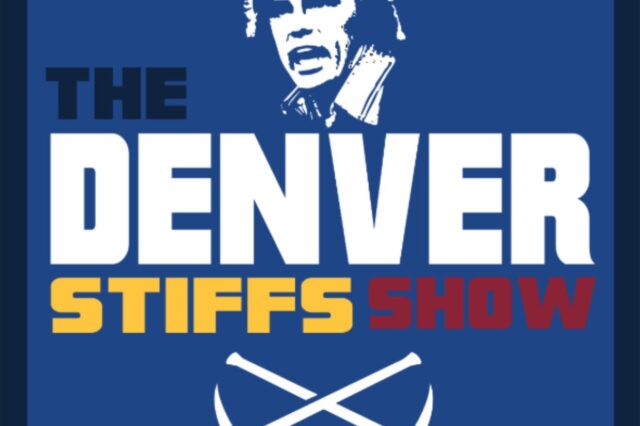Jamal Murray’s pick and roll masterpiece
After struggling through (nearly) all of his first three playoff games, Jamal Murray has completely turned a corner offensively. Since game three of the first round, Murray is averaging 21.8 points per game, the 12th most among all players over that time-frame. He’s also shooting 49% from the field, 40% from behind the arc, and 89% from the free throw line while dishing out 6.2 assists per game. If it weren’t for Nikola Jokic’s historic run over that same span, Murray would probably be garnering a lot more recognition for his impressive play.
The key to Murray’s turnaround has been his improved playmaking out of the pick-and-roll (PnR). In Monday’s game-one win over the Portland Trail Blazers, the Murray-Jokic two-man game was on full display, carving up the defense and generating excellent looks almost every time down the court. The Nuggets held a 136.1 offensive rating (ORTG – points scored per 100 possessions) in game-one when both Jokic and Murray were on the court. For reference, the Golden State Warriors led the league with a 114.9 ORTG throughout the regular season.
One reason for Denver’s offensive explosion was the patience Murray showed attacking the paint out of the PnR. Enes Kanter is a below average defender, especially when tasked with containing guards in these types of actions so the Blazers are having him drop well below the level of the screen in an attempt to wall off the paint. Murray has done a great job of keeping his dribble and pivot foot alive as he turns the corner on the screen, making it harder for Kanter to pick between defending the ball or defending the rolling Jokic.
When Jokic’s defender has stepped up higher on the screen, Murray is delivering pinpoint passes like the one below. These deliveries are the key to fully unlocking Murray’s game and, more importantly, unlocking Denver’s most dangerous options on offense. Jokic is an elite finisher and playmaker on the short roll, especially when he can catch the ball in the paint. His floater is as good as any 7-footer in the league and his passing on the roll is as precise as any 7-footer in NBA history. Murray getting the ball to Jokic in that spot when the big decides to step up in the PnR is a death sentence for the defense.
The other key to fully unlocking Murray’s game in the PnR is being able to comfortably step into shots like the one below. This play occurred following a string of scores out of the roll for Jokic so Damian Lillard is focused on holding Jokic (quite literally) and preventing him from rolling toward his sweet spot. This time, Murray sees how wide open he gets off of the screen and hops into a beautiful set shot.
Murray takes a surprisingly low amount of his three-point field goal attempts out of the PnR, instead preferring to drive toward the basket or get into the paint for a mid-range pull-up or floater. Most of his three-point attempts come from step-backs, spot-ups, and isolations.
One possible reason for this is that Murray doesn’t have a very explosive first step off of the dribble and rarely creates enough separation to get into a quick shooting motion. In the example above, Murray hops into his shooting motion allowing him to explode quickly into his jumper. If the big defending the screen were to step up and contest that shot, the hop allows him to maintain his dribble until the last possible moment so that he can explode toward the rim.
Lillard and CJ McCollum are among the league’s best at these kinds of freeze moves. Neither player has the first step of a Russell Westbrook or Kemba Walker but both have phenomenal footwork and a deadly shot that allows them to keep defenses on their heels.
In the first clip below, Lillard jogs into a screen before exploding toward the three-point line for a wide open shot. In the second clip, Lillard goes from slow to slower, to fast, to slow again, keeping the defense guessing as to whether he is about to pull-up, crossover, or blow-by. In the final clip, McCollum almost seems to lull Gary Harris to sleep with a slow step into his shooting motion. Step up to contest and McCollum can pump fake and blow by.
Murray would do well to model parts of his game after Lillard’s. Like Lillard, Murray has a slow first step but Lillard managed to get to the rim nearly twice as frequently as Murray did this season thanks to his footwork and an elite ability to shift between different speeds.
Malik Beasley’s passing
Right now, Malike Beasley is a specialist offensively but he’s showing a lot of signs of developing a much more well-rounded and versatile game. His passing in the PnR has especially been a revelation this season. In game one, he threw this beautiful dime to Mason Plumlee for a dunk in a crucial moment of the 4th quarter. This pass followed two huge three-pointers that kept the Nuggets in the lead while the starters got their rest. Without those plays, the 4th quarter would’ve shaped up quite differently.
Malik Beasley defending Rodney Hood in the pick and roll
Rodney Hood got off to a hot start in the second quarter thanks to some indecisive PnR defense from Beasley. In the clip below, watch how Beasley gets caught between going over and under the screen before ultimately giving up open shot attempts.
Malone immediately called a timeout after the second one and must’ve emphasized for Beasley to default toward going over the screen, regardless of how high the screen was set. Hood is a scorer but averages fewer than three assists per 36 minutes over his career and isn’t a great decision maker once you force him to read the court on the move. Once Beasley started chasing him off of the three-point line in the PnR, Hood struggled to create great looks.
Jamal Murray staying in front of his man
While Murary’s offense has been exceptional, his defense remains a glaring weakness in his game and for the Denver Nuggets as a whole. The biggest issue is Murray’s inability to keep his man in front of him off of the dribble. In the clips below, he gets switched onto Moe Harkless and Rodney Hood, both of whom have a decent dribble-drive game but who are not the types of players the Nuggets can afford to send early help. Murray has to be able to stay in front of guys longer than this.
Denver’s 4-5 PnR
Much has been made of the inverted 5-1 PnR where Jokic is the ball handler and Murray the screener but the 4-5 PnR between Paul Millsap and Jokic is equally as delightful. In this clip, Millsap runs the play like a veteran point guard, easing into the screen to lure the defender over the top before exploding into a eurostep around the rim protector.
This play came within the unscripted flow of the offense in transition but it might be something that the Nuggets look at in the coming games, especially if the Blazers try to switch defensive assignments and place Kanter onto Millsap.
The unguardable lineup
Torrey Craig picked up three quick fouls in Monday’s game and was limited to just 19 minutes so it’s unclear if the Nuggets relied on Beasley to play 14 minutes with the starters out of necessity or by choice. Either way, that lineup presents a whole host of problems for the Blazers and might be the best Nuggets lineup in this series.
It starts with the Murray-Jokic PnR which, as described above, is on some kind of run over the last five games. But swapping Beasley for Craig makes that 1-5 PnR virtually unguardable for the Blazers. With Kanter and Lillard being below average PnR defenders, help has to come from somewhere else on the court. Placing two of Denver’s best spot-up shooters in each corner forces the Blazers to pick between helping off of the corners or guarding Jokic straight up. In game one, they mostly stayed home and watched poor Meyers Leonard get roasted into a pumpkin.
Beasley played 14 minutes alongside Murray, Harris, and Jokic (Millsap, Plumlee, and Craig all got a stab at filling in the power forward spot with that group) and the Nuggets were only a +2 over that stretch. Typically, having Beasley, Murray, and Jokic on the court together might come with a defensive risk but the Nuggets can afford to play this lineup whenever one of McCollum or Lillard are not on the court.
Digging a bit deeper into the film and the numbers provides hope that this lineup might have a lot more to offer. Jokic had 16 points on 5/5 shooting over that span to go along with three assists but the other Nuggets shot just 1/10 from behind the arc. Here are all 9 of those misses.
With the exception of the two by Millsap, the rest of those attempts were great looks. If the Nuggets knock down just two or three of them, game one probably would’ve looked a lot different.
Denver should look to give this lineup another extended look in game-two.


